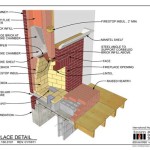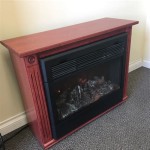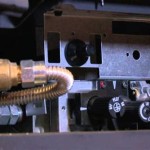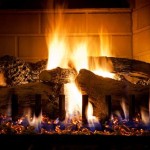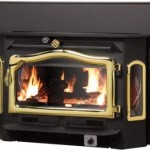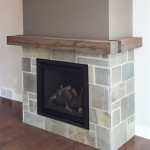Ethanol Ventless Fireplaces: A Comprehensive Overview
Ethanol ventless fireplaces represent a modern approach to home heating and ambiance, offering a visually appealing alternative to traditional wood-burning or gas-powered fireplaces. These appliances utilize liquid ethanol as fuel, producing a clean-burning flame without the need for chimneys, vents, or gas lines.
The absence of venting requirements provides significant flexibility in terms of installation. Ethanol fireplaces can be placed in a wide range of locations, including apartments, condominiums, and homes without existing fireplace infrastructure. This adaptability, coupled with their ease of use and aesthetic appeal, has contributed to their growing popularity in recent years.
Understanding the fundamental principles, benefits, and potential drawbacks of ethanol ventless fireplaces is crucial for making informed decisions regarding their suitability for a particular environment. This article provides a detailed overview of these fireplaces, covering aspects such as their functionality, safety considerations, maintenance requirements, and the diverse range of designs available.
The Combustion Process and Fuel Characteristics
Ethanol ventless fireplaces operate on the principle of combustion, a chemical process involving the rapid reaction between a fuel and an oxidant, typically oxygen, to produce heat and light. In this case, the fuel is ethanol, specifically denatured ethanol, which is ethanol rendered unfit for human consumption through the addition of additives. This denaturing process is implemented to comply with regulations and prevent the misuse of ethanol as an alcoholic beverage.
The combustion of ethanol produces carbon dioxide, water vapor, and heat as primary byproducts. Unlike wood-burning fireplaces, ethanol fireplaces do not generate smoke, soot, or ash, eliminating the need for a venting system to remove these combustion products from the living space. This clean-burning characteristic is one of the key advantages of ethanol fireplaces.
The quality of the ethanol fuel directly impacts the performance and cleanliness of the burn. Higher-grade ethanol, typically 95% or higher in purity, tends to produce a cleaner and more consistent flame with fewer odors. Lower-grade ethanol may contain impurities that result in a less efficient burn and the release of unpleasant smells. Sourcing ethanol fuel from reputable suppliers is therefore essential to ensure optimal performance and minimize potential indoor air quality concerns.
The heat output of an ethanol fireplace is determined by several factors, including the size of the burner, the amount of ethanol fuel used, and the design of the fireplace itself. Ethanol fireplaces typically produce less heat than traditional wood-burning fireplaces, making them more suitable for providing supplemental heat and creating a cozy ambiance rather than serving as a primary heating source.
The burning time of an ethanol fireplace depends on the capacity of the fuel reservoir and the burn rate. A typical ethanol fireplace may burn for several hours on a single fueling, providing a sustained flame for an extended period. The burn rate can often be adjusted by using a damper or control mechanism to regulate the amount of oxygen available for combustion.
Safety Considerations and Best Practices
While ethanol ventless fireplaces offer convenience and aesthetic appeal, it is crucial to prioritize safety when using these appliances. As with any open-flame device, there are inherent risks associated with their operation, and adhering to safety guidelines is paramount to prevent accidents and ensure the well-being of occupants.
Proper ventilation is essential, even though these fireplaces are ventless. While they don't require a chimney, they do consume oxygen during combustion. It’s important to ensure adequate airflow in the room to prevent a buildup of carbon dioxide and maintain a healthy indoor air quality. Opening a window or door slightly can often provide sufficient ventilation.
Refilling the fuel reservoir must be done with extreme caution. Always ensure that the flame is completely extinguished and the burner has cooled down before adding more ethanol fuel. Never refill the reservoir while the fireplace is operating or still hot, as this could lead to a dangerous flare-up or explosion. Using a funnel can help prevent spills and ensure that the fuel is directed accurately into the reservoir.
It is imperative to use only ethanol fuel specifically designed for ethanol fireplaces. Using other types of fuels, such as gasoline or kerosene, is extremely dangerous and could result in a fire, explosion, or the release of toxic fumes. Always follow the manufacturer's instructions regarding the type and grade of ethanol fuel to use.
Keep flammable materials away from the fireplace at all times. Curtains, furniture, paper, and other combustible items should be kept a safe distance from the flame to prevent accidental ignition. Children and pets should also be supervised closely around the fireplace to prevent them from getting too close to the flame or coming into contact with the hot surfaces.
Install a carbon monoxide detector in the room where the ethanol fireplace is located. While ethanol fireplaces produce relatively low levels of carbon monoxide compared to wood-burning fireplaces, it is still prudent to have a carbon monoxide detector as a safety precaution. Regularly test the detector to ensure that it is functioning properly.
Never leave an ethanol fireplace unattended while it is burning. Always supervise the fireplace while it is in operation and extinguish the flame before leaving the room or going to bed. This will help prevent accidents and ensure that the fireplace is operating safely.
Regular maintenance is also crucial for ensuring the safe and efficient operation of an ethanol fireplace. Clean the burner regularly to remove any residue or buildup that may accumulate over time. Follow the manufacturer's instructions for cleaning and maintenance procedures.
Design Variations and Installation Considerations
Ethanol ventless fireplaces are available in a diverse range of designs and styles to suit various aesthetic preferences and spatial requirements. From sleek and modern wall-mounted units to freestanding models that mimic the appearance of traditional fireplaces, there is an ethanol fireplace to complement nearly any décor.
Wall-mounted ethanol fireplaces are a popular choice for contemporary spaces, offering a minimalist and space-saving design. These units are typically mounted directly to the wall, creating a focal point that adds warmth and visual interest to the room. Wall-mounted fireplaces can be installed easily, requiring only basic tools and hardware.
Freestanding ethanol fireplaces offer greater flexibility in terms of placement. These units can be moved from room to room as needed, allowing for greater versatility in decorating and rearranging living spaces. Freestanding fireplaces are available in a variety of styles, from traditional to contemporary, and can be placed on the floor or on a raised platform.
Tabletop ethanol fireplaces are compact and portable, making them ideal for smaller spaces or for use as decorative accents. These units are typically placed on tables, countertops, or mantels, adding a touch of warmth and ambiance to any setting. Tabletop fireplaces are easy to use and require minimal maintenance.
Insert ethanol fireplaces are designed to be installed into existing fireplace openings, providing a modern and convenient alternative to traditional wood-burning fireplaces. These units offer the aesthetic appeal of a traditional fireplace without the need for venting or gas lines. Insert fireplaces are available in a variety of sizes and styles to fit different fireplace openings.
When installing an ethanol ventless fireplace, it is important to carefully consider the placement of the unit. Ensure that the fireplace is placed on a stable and level surface and that there is sufficient clearance around the unit to prevent flammable materials from coming into contact with the flame. Follow the manufacturer's instructions for installation and ensure that all connections are secure.
Before installing an ethanol fireplace, it is advisable to check local building codes and regulations to ensure compliance. Some jurisdictions may have specific requirements regarding the installation and use of ventless fireplaces. Obtaining necessary permits or approvals may be required before proceeding with the installation.
The cost of an ethanol ventless fireplace can vary depending on the size, design, and features of the unit. Wall-mounted and tabletop fireplaces tend to be less expensive than freestanding or insert fireplaces. The cost of ethanol fuel can also vary depending on the supplier and the quantity purchased.
Ethanol ventless fireplaces offer a convenient and aesthetically pleasing alternative to traditional fireplaces, providing warmth and ambiance without the need for venting or gas lines. By understanding the fundamental principles, safety considerations, and design options, individuals can make informed decisions regarding the suitability of these appliances for their homes and lifestyles.

Ignis Long Ventless Ethanol Wall Fireplace Maximum

Black Fireplace Recessed Ethanol Burning Ignis Ardella

Tabletop Fire Pit Portable Fireplace Indoor Outdoor Bio Ethanol Ventless Mini Bowl Clean Burning Real Flame For Patio Balcony Shein Usa

Ignis Recessed Ventless Ethanol Fireplace Lata

Bio Ethanol Fireplace Ventless Freestanding Heater With Real Flames Black 196393347287

Hastings Home Bio Ethanol Ventless Fireplace Tabletop Rectangular Real Flame Burning Indoor Outdoor Portable Heat 824003fru Zoro

Bio Ethanol Burner 12 Inch Ventless Fireplace Insert Gnhoch Eb1200 Com

13 5 L Portable Tabletop Fireplace Clean Burning Bio Ethanol Ventless

Ventless Modern Bio Ethanol Fireplaces The Choice Of Designers

Double Sided Freestanding Ethanol Fireplace Vu Ignis
Related Posts

